Four guideposts to compose better white papers
- White paper prelude
- Guidepost 1: Designate a technical writer
- Caution: Assumptions ahead
- A concern for the reader’s education
- Guidepost 2: Figure out the reader’s specific goal
- Your goal
- The reader’s goal
- Guidepost 3: Beware how you address the reader
- Guidepost 4: Use the conclusion to show the reader a way out
- Last words
An important aim of a well-written white paper is to both educate and convince a reader about a technology or product. To steer you toward this goal, we have outlined four guideposts to move you away from mediocrity (what your readers will dismiss as “marketing fluff”) and towards a higher level of mastery as you compose your next white paper.
White paper prelude
“Marketing acumen balanced with technical clarity” – that’s one way to describe a good white paper.
Known as a valuable marketing tool to sell customers on something, often a technology or product, white papers are technical documents (regularly used by corporations) designed to 1) educate readers and 2) help them understand the value of something as it relates to their problem. A white paper serves as an educational piece, but it’s also designed to present a solution (though not a how-to application of it) along with conveying value to the reader. And we can measure the quality of a white paper by its capacity to effectively educate and convince.
To help you compose a good white paper, follow along with the guideposts below. Let’s start with the most important guidepost: designate a technical writer.
Guidepost 1: Designate a technical writer
In practice, white papers often start with a subject matter expert composing a white paper as a solo effort. Several garbled drafts later, they believe their work is near complete and only then decide it’s time to get with a technical writer (who gets a messy ball of word yarn to untangle). Getting together with a technical writer before the first draft is even developed may be the better strategy to set you on a path for clear communication early on.
Technical writers (good ones anyway) can help rein in unchecked or unreasonable assumptions made by subject matter experts. Without the burden of expertise, they proceed with caution when addressing the reader (your audience) and make their understanding a priority. Of course, a technical writer can support you in several other aspects of the writing process (co-planning, co-authoring, information architecture, etc.), but for a white paper endeavor, one of the more important things they can do is to help manage and counteract assumptions so that you can successfully educate the reader.
Caution: Assumptions ahead
White paper authors may struggle to properly educate readers if and when they unwittingly write with numerous assumptions (unknown to the writer and hidden from the reader). What usually results is a paper interspersed with statements such as:
“Because the concepts are self-evident…” or “It’s obviously true that…” and “Without a doubt, you can clearly see that…”
This tendency to assume that what we know (what’s perceptible to us) is equally obvious to and understood by another is called the curse of knowledge. It’s what makes us perplexed by and later annoyed at another person’s confusion. Once we know something so well (our area of expertise), it becomes a challenge to explain it to non-experts. That is, when cursed by knowledge, taking another’s perspective can become a challenge—say someone who requires a clear demonstration of a concept that for the expert needs no explanation at all.
A concern for the reader’s education
Someone may suggest that to remedy the curse of knowledge, you can simply make your assumptions known. But the problem is that you often don’t know you’re making them. And even if you did know, you’d end up with a paper that’s best consumed by a reader with knowledge and understanding compatible with yours.
This point of weakness is where a technical writer can be your greatest ally. They help lift the curse of knowledge by providing perspective (sensitivity to another’s state of mind) and they use their non-expert vantage point to identify points of confusion, information gaps, and vague or bogus assertions. They guide you toward technical clarity (clear explanations and lucid illustrations of concepts) and ensure the reader gets a solid education on the topic. That sets you up for success to later give confidence to or influence the decision making process of your reader, say a current or potential customer.
Here’s how we can address an assumption:
Instead of: Background subtraction methods in computer vision are self-explanatory.
Try: The basic idea behind background subtraction is to generate a foreground mask. For example, let’s take two video frames (A and B). We subtract one frame from the other—the current frame (B) minus the previous frame (A)—to find a difference.
Guidepost 2: Figure out the reader’s specific goal
Make every attempt to package a white paper in such a way that it can be well received by the reader. To help you achieve a favorable reception, know that your goal is to assist the reader in achieving their goal.
Your goal
Create a paper that focuses on the needs of the reader. Everything you write should circle back to the reader’s interest (that is, the problem they want to solve or issue they want to understand). That means being vigilant about providing erroneous details—historical tangents, bits of trivia, and technical gobbledygook. These things distract the reader and result in a white paper that’s about what you want to say and not what the reader needs to hear.
The reader’s goal
A reader has come to your white paper for help—they may seek to understand something in greater detail or see if what you are promoting is a solution to their problem. But they’re not looking for quick answers. Before being sold on something, they want enough background information to get to a point where they understand the topic sufficiently to make their own decision. (That’s the education piece.) But most importantly, they need to trust you—to believe that you are a credible person with sound expertise. And an important gauge they use to determine if you are, in fact, credible is whether or not you have a clear idea of who you are writing for. That is, do you really know what your audience needs from you? By establishing the reader’s goal, you give them great incentive to continue reading.
Here’s what it looks like to focus on the needs of the reader:
Instead of: This white paper discusses popular machine learning algorithms.
Try: Beginner data scientists with an undergraduate-level of machine learning knowledge can use this white paper as a guide for choosing from the top five machine learning algorithms in predictive analytics.
Guidepost 3: Beware how you address the reader
White paper protocol prescribes that you present professional and trustworthy information. But that doesn’t mean choosing to deliver the information in a distant, businesslike manner (corporate tone). Taking the view that you are in conversation with a reader keeps you aware that someone is on the receiving end of your words. Now, ‘conversation’ here doesn’t mean adopting a casual, laid-back tone with no regard for formality. It means you are acutely aware of the reader’s presence and you make efforts to engage them—that includes placing restrictions on the language you use (clichés, buzzwords, negativity, etc.). Also, some may argue that white papers should present information that is unbiased (and therefore presumably credible) but an important element of the white paper is to convince someone of something—your subtle bias, despite your wish to remain objective. Your motivation is often to advocate a certain position or view and that means you must make careful choices about your tone when addressing the reader.
The rules of reader engagement include being aware of how you package your words. One way you can quickly spoil the reader’s attention and demotivate them from going along with your direction (the path you’d like to lead them down) is to include statements tinged with negativity. If you’d like to remain in a position where you can influence a reader to take a turn either this way or that way, keep an eye on pessimism.
Instead of: Consumers today are increasingly lazy and disloyal and that makes it difficult to understand what they want.
Try: Modern consumers are increasingly Internet savvy and equipped with mobile devices that enable them to make informed purchasing decisions.
Guidepost 4: Use the conclusion to show the reader a way out
During a conversation with a friend, you’d never end the exchange by restating the key points of your chat (here’s what I just told you…). Instead, you might use the end of your discussion as a point to meaningfully reflect on what’s just been said. In the case of a white paper, use the conclusion to join your thoughts together and demonstrate (once and for all) why the information you’ve just presented about a technology or product is a solution that’s relevant to the reader’s problem. You may even be able to argue that it’s the best or better solution (but that depends on the paper’s scope and topic).
Instead of using a conclusion as an opportunity to repeat yourself (popular, uncontested advice for corporate PowerPoint presentations), this is your chance to 1) help the reader apply the information to their life (so they can see the greater relevance) and 2) influence what they do next.
That means you must avoid vague or dead-end conclusions. Here’s what it looks like to synthesize your thoughts and provide clear direction to the reader so they know where to go next:
Instead of: This white paper outlined popular machine learning algorithms. It then explained each one in detail and provided use cases for each. Find more information at our company website.
Try: We’ve shown that the best machine learning algorithm for your application depends on several factors (details of the data set, the time you have, etc.). And while we’ve outlined five of the most useful algorithms and matched them to specific, known problems in predictive analytics, the truth is that you won’t know which algorithm works best to solve your particular problem until you actually test it out.
To learn more about choosing machine learning algorithms, check out our predictive analytics forum where you can interact with our community of data scientists to discover creative ways to use machine learning.
Last words
Knowing how to write good white papers is not a special talent that only a few of us possess; rather, it’s a collection of writing choices that start with the decision to team up with a technical writer. By choosing writing behaviors that move you toward white paper goodness (that is, following the guideposts presented here), you can continue to build your skill in white paper composition to achieve happily informed and convinced readers.
If you are interested in our technical communication services, please contact us for more information!









